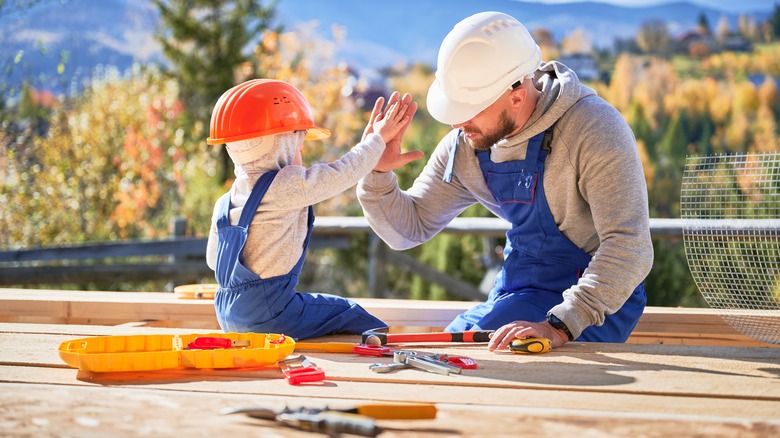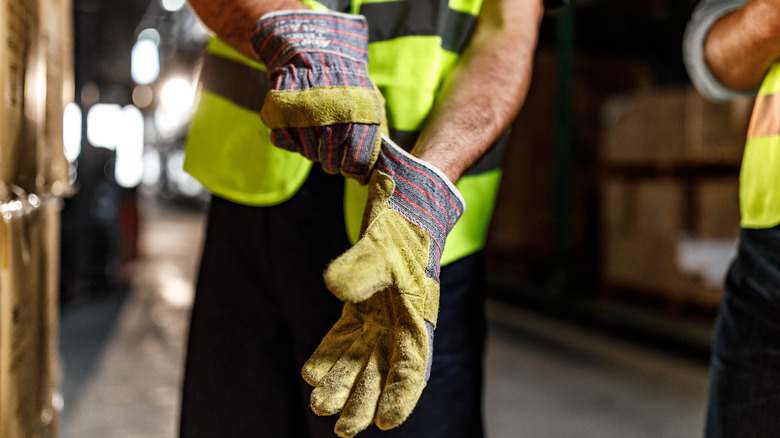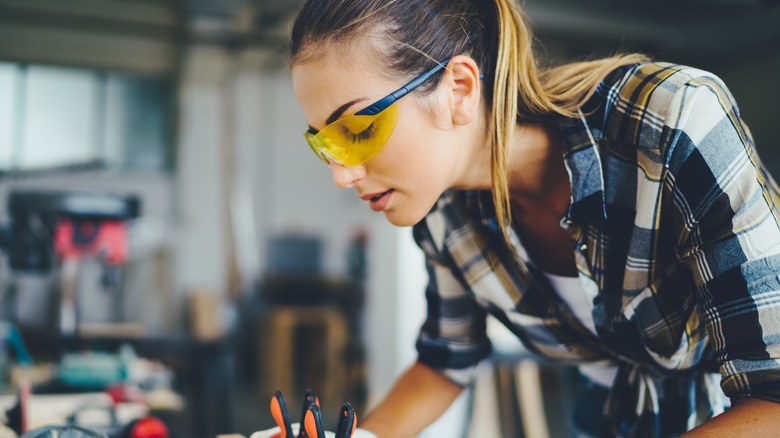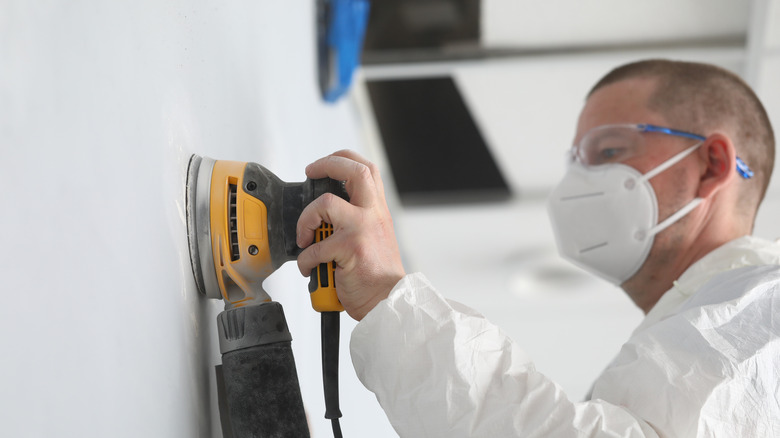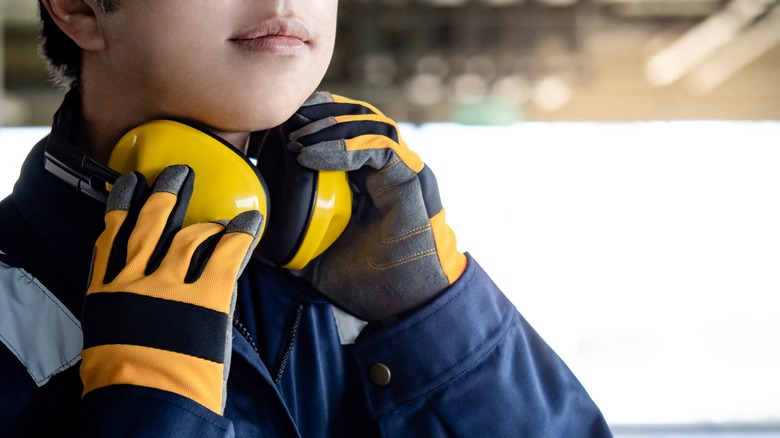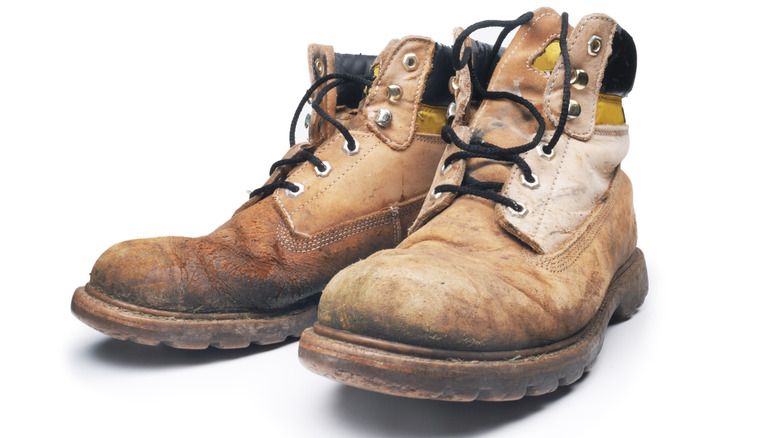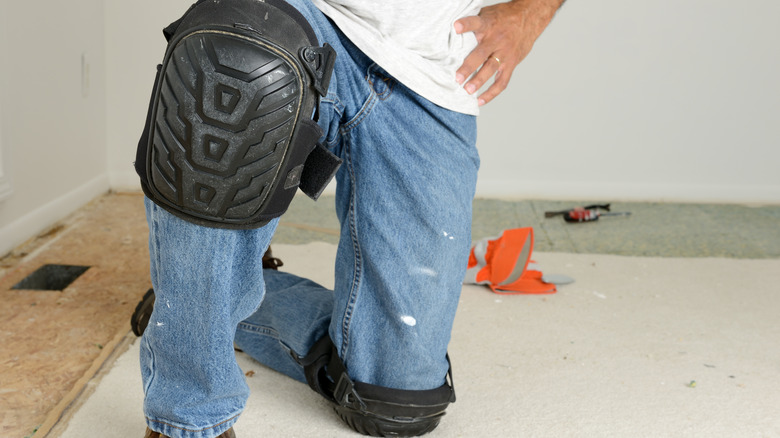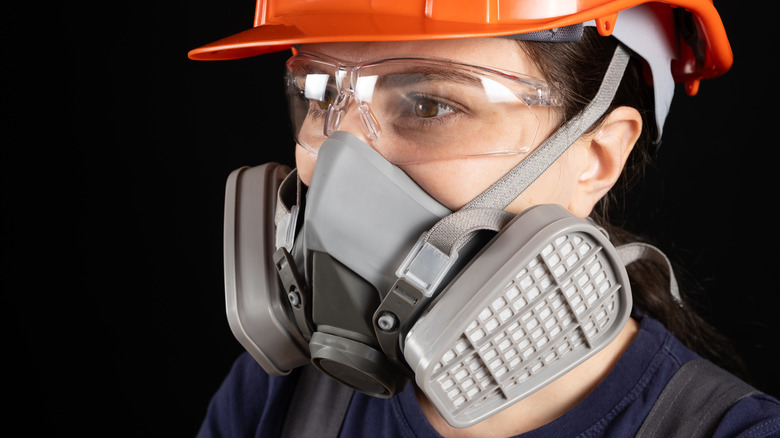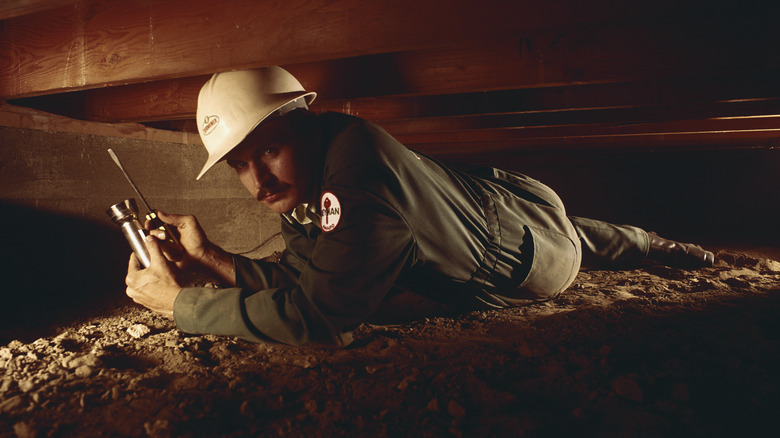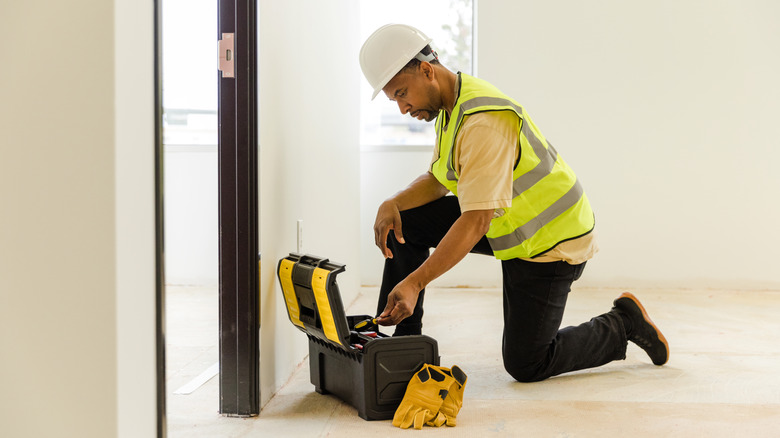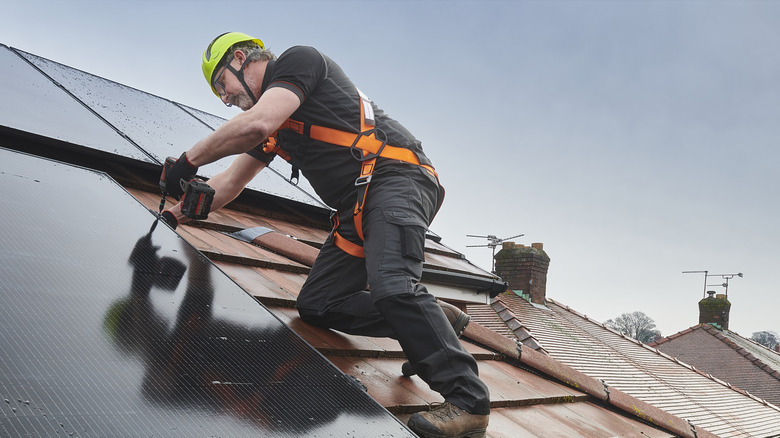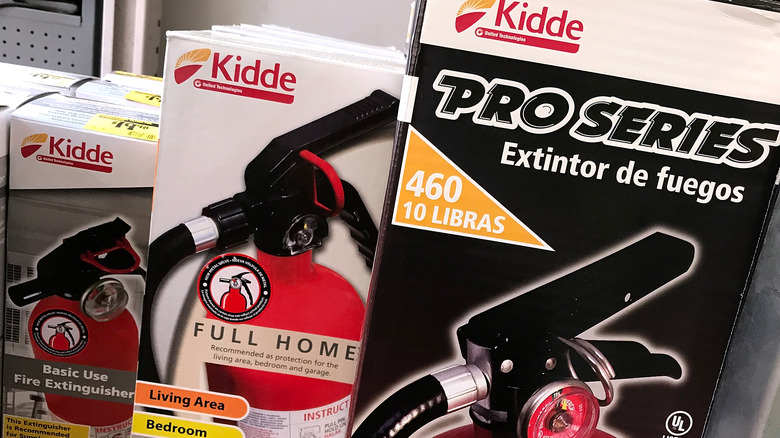11 Must-Have Pieces Of Safety Equipment For Home Mechanics
If you like to think of yourself as a home mechanic who can work on a range of maintenance and DIY projects, then you'll know that safety is always essential. This type of work will often involve using power tools or dangerous equipment that can easily cause serious injuries with one mistake. Having the right protective equipment on hand to shield yourself and others is important.
But what kind of safety gear should every home mechanic have in their arsenal? Here, we delve into the must-have pieces of safety equipment for keeping you as safe and comfortable as possible while working. With these items in your home, no project will be too daunting or too dangerous, as you'll have the right tools for the job. We've even thrown in some useful recommendations from major power tool brands so you can be sure they are quality products.
Protective Gloves
Protective gloves may sound like a basic piece of equipment, and not always necessary for tackling DIY projects at home, but they can be very useful in most situations. They can serve many purposes but chief among them is the fact that they can protect your hands and fingers from a variety of potential dangers. Doing any kind of mechanical work in the home could involve tools or chemicals and materials that can cause injuries. Wearing a good pair of protective gloves adds a barrier between your hands and any hazards.
Wearing gloves is as helpful for saw safety as it is for sticking your hands into the engine of your car: A good set will provide adequate defense against scrapes, cuts, and punctures, while also allowing users to retain a good grip and flexibility. Some gloves even offer added grip by using textured surfaces to ensure tools don't easily slip out of your grasp when grease or fluid is involved. This piece of equipment will also help people stay clean while working, stopping any dirt or materials being transferred to your skin during handling.
There are many different types of protective gloves on the market. One of the market leaders is Makita's Advanced ANSI 2 Impact‑Rated Demolition Gloves. These offer protection from impact, plus they are machine washable and designed to be as comfortable as possible. The gloves can even be used with touchscreens, meaning you don't have to take them off to use your smartphone.
Safety Glasses
Even those only tackling very basic DIY projects can benefit from having a good pair of safety glasses. Often known as goggles, this piece of equipment is designed to protect your eyes from a variety of threats. They are essentially worn like glasses, although they provide a larger degree of protection thanks to the fact that they are made of stronger materials and ought to completely enclose the area around the eyes.
Safety glasses can be useful in many situations. Drilling, sawing, or even hammering can loosen debris or send particles flying off at high speeds, and there's a possibility of these small pieces hitting your eyes or face and causing damage. Goggles effectively act as a shield, stopping anything from physically coming into contact with your eyeballs when working. They can also provide a barrier that prevents chemicals and fumes from causing irritation in case you've got to use caustic cleaners or wipes on your car.
The 3M BX Protective Eyewear is a good example of a pair of safety glasses. It includes anti-fog lenses to help keep your vision clear and can be adjusted to fit perfectly on your head. These particular goggles also have an anti-scratch coating and offer some protection against UVA, UVB, and UVC rays when you are working on a project car outside.
Face Cover
Anyone who has ever done any type of DIY at home will probably know the danger of inhaling material or having unwanted dust and debris enter your mouth. It isn't just an unpleasant experience but can also be potentially dangerous, especially if substances are toxic, get stuck in the throat, or are accidentally ingested. Fortunately, there's a fairly easy way to avoid this entirely and it involves wearing something that has become commonplace in the last few years thanks to the COVID-19 pandemic — a face covering.
Face coverings come in a variety of styles, but the main design is largely the same regardless of brand. They are essentially a piece of cloth covering the mouth and nose, which stays in place using fasteners that go around the ears. The face cover acts as a barrier, preventing the inhalation of any particulate matter being generated by power tools or doing activities such as sawing and drilling. In some cases, face covers will also help stop the user from inhaling harmful vapor from liquids such as paint and solvents.
If you're looking to purchase a face cover, the Milwaukee Performance Face Covering is a good bet. The product comes with three masks in two distinct sizes and is designed with comfort in mind so that you can wear them for extended periods of time.
Ear Defenders
Doing any kind of DIY or home maintenance can be a noisy experience. By their very nature, power tools generate a lot of noise as they move heavy materials at high speeds. Activities such as hammering and or ratcheting can also create unpleasant sounds. Prolonged exposure to this type of loud sound can also damage your ears and cause hearing loss, so it is important to do something to protect against excessive noise as much as possible.
There are two types of widely used ear defenders. The first are smaller ear plugs that sit in the ear, and the second are over-the-top earmuffs worn on the head. Regardless of the style, the products both have the same goal — to reduce the intensity of the sound waves hitting your eardrum. Unlike the best noise-canceling headphones — which neutralize certain external sound frequencies by playing the opposite ones through the headphones — these kinds of ear defenders are more concerned with blocking sound from getting to your ears in the first place. If you know you are going to be doing loud work, a good pair of ear defenders is essential.
The 3M PELTOR Optime 98 Earmuffs are a good choice when it comes to over-the-head ear defenders. Constructed with steel, they should withstand long-term use without warping or damage and they are comfortable enough to wear all day.
Work Boots
If you are putting up some furniture or hanging a picture on a wall, there's not really any need to wear a pair of work boots. After all, there are not exactly many ways to injure your feet in these situations. However, any DIY project that involves moving heavy items, working with sharp tools, or walking around on an uneven or slippery service should be tackled with appropriate footwear.
Work boots are a good way to ensure that you have all the protection you need for your feet. Built using tough materials and often reinforced with metal toe caps, work boots are made to withstand many different threats. These could include heavy objects or sharp tools being dropped on them, or standing on nails, broken glass, or other protrusions. They usually have extra grip as well, so they can walk on slippery surfaces more easily — great for if you spill during an oil change.
DeWALT's Titanium Waterproof work boots are a great example of protective footwear. They have steel plates in them to add extra strength, they are waterproof to keep your feet dry, and they are slip-resistant. These boots also come with a comfort guarantee and help protect against electrocution.
Knee Pads
If there's one thing that is common throughout all DIY projects or home maintenance, and especially working in a garage, it is that you are unlikely to be in a standard or comfortable position. Whether you are screwing something underneath a table, cramped into a small space, or bending down to reach under your car, there's a good chance you'll end up on your knees at some point. That's not an issue if you are only having to stoop down for a short time, but extended periods spent on your knees can get painful.
You don't have to suffer through this type of pain when working in your house, though. A quick and easy solution might be to throw down a folded towel, but this will likely ruin the towel and not provide the support needed for long stretches. That's why knee pads are a great option.
These DIY accessories help spread your weight and cushion the knees, reducing strain to alleviate pain and make injuries less likely. They'll also keep you from slipping and ensure your knees don't get scraped or cut on rough surfaces. The Makita Ultimate Knee Pad Set is a prime example of something that can make working on the floor a much more comfortable experience.
Respirator
While a face cover will be perfectly acceptable for general DIY jobs around the home, if you are planning on tackling a big job that will involve a lot of sawing and drilling or using chemicals that will give off dangerous fumes, a respirator is a much better option. These masks offer a higher degree of protection than face coverings, as they are often skin-tight and use filters to help remove harmful materials from the air before reaching your airways.
A good respirator will be able to stop dust and fumes from being inhaled. Many are also effective at stopping mold and mildew spores from entering your lungs if you are working in a damp and cold area such as a basement. For those performing DIY in an attic with fiberglass insulation, a good respirator will also keep the material's particles from irritating your mouth, nose, and throat.
DeWALT's Half Face Mask Respirator with P3 Filters is rated to protect users from 99.95% of airborne particles and features the highest level of filtration. That means you can feel confident giving your car a fresh coat of paint without worrying about off-gassing or fumes (in a well-ventilated environment, of course), as it is rated for use in contaminated environments.
Flashlight
Unlike almost every other piece of safety equipment included here, flashlights aren't necessarily exclusive to DIY. They're useful in a variety of situations and worth having around in most homes, even as a backup in case of a power cut. Whether you are a DIYer doing some work at home or a professional on a construction site, eventually you will probably be in a situation where you need a little more light.
Flashlights can be indispensable for any form of maintenance or handiwork. Whether the entire environment isn't illuminated — like if you are in an attic or basement — or you just need a clearer view under the hood, having a little portable light is always handy. Flashlights can also help you identify hidden dangers where you are working and help you properly inspect everything you've done without fear of missing anything.
Of course, the best and brightest flashlights will also give you a way of seeing in the event of an emergency, including if you somehow trip a circuit breaker and cause an electrical failure. There are lots of great models on the market, including Makita's Flashlight LXT ® DML812.
Hard Hat
Not every project that a home mechanic faces will require a hard hat. Basic tasks or those that don't involve any potential overhead danger would not benefit from head protection in any major way. But there are cases where a hard hat is an essential bit of kit that will protect you from a wide range of hazards.
If you are working in an environment where there is a risk of items or materials falling on you, a hard hat is a must. The same goes for if you are outside cutting down trees, working on a roof, or you're under your car and worried about banging your head.
A hard hat can also be useful if you are working high up, adding a barrier between your head and the floor in case you fall. Products like Makita's Combo Safety Helmet add in extra elements, such as a face visor and ear muffs for added value, while some can also be combined with flashlights or other gadgets.
Harness
For many people, a harness might seem like a completely unnecessary piece of safety equipment. Indeed, the vast majority of home projects or DIY activities will probably have no real need for a harness. After all, you are unlikely to need one for putting up some furniture, fitting floor tiles, or working low to the ground. But harnesses do have their uses, and in some very specific circumstances, they're must-have purchases.
Harnesses effectively have two purposes. They can help secure you if you are working at a height or help carry the load of heavy objects and tools. If you are on a roof for example, a harness would be vital as it would stop you from falling and hitting the floor, potentially saving you from serious injuries or even death. Meanwhile, if you need to carry heavy objects, they can be secured to the harness, which helps spread the load so it isn't all on your arms.
Something like the Ryobi Ergo Harness combines the two benefits of harnesses. When used for hedge trimming or other gardening work where you will not necessarily be on the roof, it offers the ability to keep tools secured to you and level.
Fire Extinguisher
Most homes benefit from having a fire extinguisher in them. They are essential safety tools that can help combat fires and stop small incidents from escalating. Whether you are cooking in the kitchen or working with flammable materials, there's always a small risk of a fire, and having a way to quickly stop it may be the only way to avoid becoming seriously injured and losing property in an inferno. This an essential safety tool everyone should keep in their car, and it's important for the home mechanic too.
If you are using power tools like a high-speed drill, chainsaw, or other equipment that can generate a lot of heat, like a welder or soldering iron, there's always a risk of creating a spark that ignites flammable materials. If that happens, having a fire extinguisher on hand is vital. Fire extinguishers are widely available from most DIY stores as well as online retailers like Amazon, including this Kidde Fire Extinguisher for Home, which comes in a variety of pack sizes so you can have more than one available to use.
